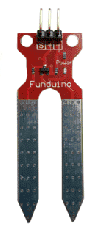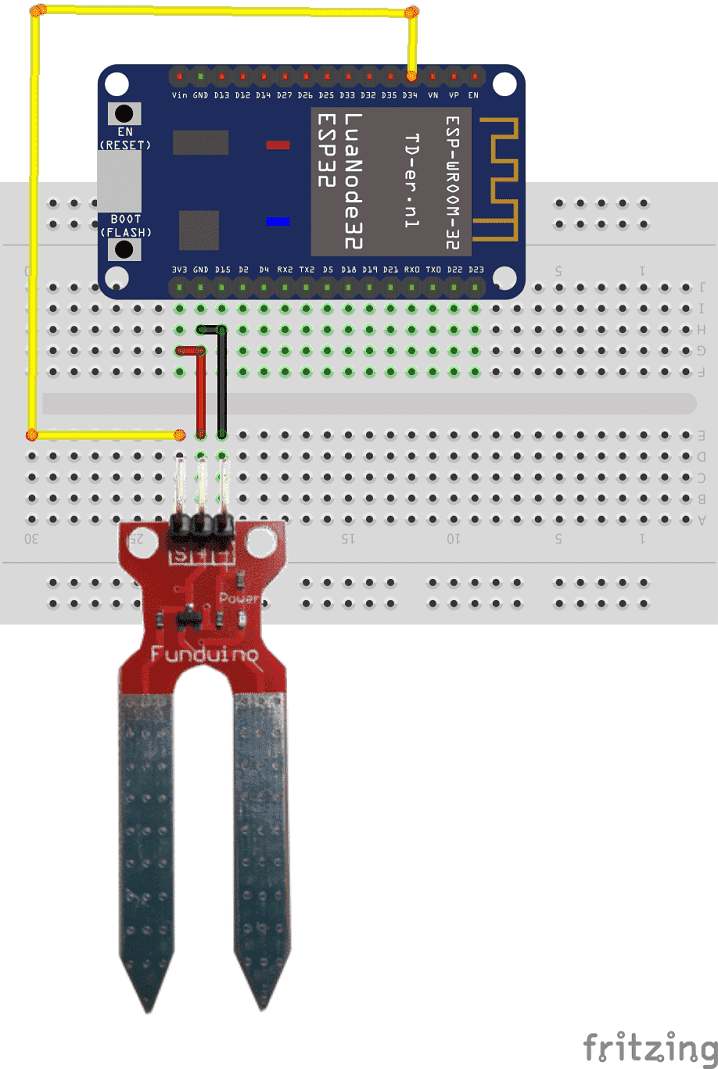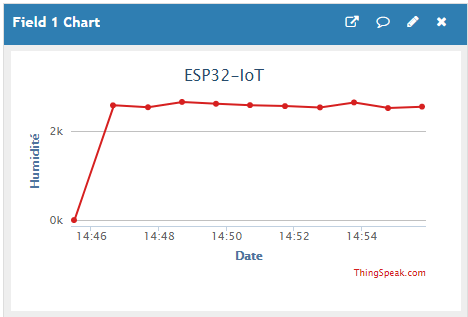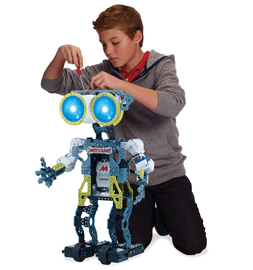
IoT applied in Agriculture with ESP32

IoT applied in Agriculture
The Internet of Things (IoT) can be applied in agriculture to improve crop yields, reduce costs, and increase efficiency. IoT devices such as sensors, cameras, and drones can be used to gather data on soil moisture, temperature, and crop health, which can then be analyzed to optimize irrigation, fertilization, and pest control. Additionally, IoT can be used to track the location and movement of livestock, monitor the health of animals, and automate feeding and milking processes. Overall, the use of IoT in agriculture can lead to more sustainable and efficient farming practices.
IoT applied in Agriculture with ESP32
The ESP32 is a low-cost, low-power microcontroller with built-in WiFi and Bluetooth capabilities that can be used to build IoT devices for agriculture. Some examples of how the ESP32 can be used in agriculture include:
- Soil moisture sensors: ESP32 boards can be used to build sensors that measure the moisture content of soil and send the data wirelessly to a central hub for analysis.
- Crop monitoring: ESP32 boards can be used to build cameras and image processing algorithms that track crop growth and predict crop yields.
- Livestock tracking: ESP32 boards can be used to build wireless tags that track the location and movement of livestock, monitor their health, and trigger automated feeding and milking processes.
- Irrigation control: ESP32 boards can be used to build sensors that measure soil moisture and weather data, and use this information to control irrigation systems and optimize water usage.
By using ESP32 in IoT applied in agriculture, the systems can be low-cost, low-power and efficient. With the help of the sensors and cameras, farmers can have a better understanding of their crops and soil, thus making data-driven decisions to improve crop yields and reduce costs.
Presentation of ThingSpeak
ThingSpeak is an open-source Internet of Things (IoT) platform that allows users to collect, store, and analyze sensor data in the cloud. It is often used in applications such as agriculture, building automation, and environmental monitoring. ThingSpeak provides a set of APIs and tools that enable users to create IoT applications and devices that can send and receive data via the internet.
ThingSpeak features include:
- Data storage: ThingSpeak allows users to store sensor data in the cloud and view it in real-time or historical charts.
- Data analysis: ThingSpeak provides built-in tools for data analysis and visualization, such as MATLAB and MATLAB analytics, which can be used to process and analyze sensor data.
- Integration with other platforms: ThingSpeak can be integrated with other platforms such as Arduino, Raspberry Pi, and other microcontrollers, allowing users to easily connect and control devices.
- Alerts and notifications: ThingSpeak can be configured to send alerts and notifications when certain conditions are met, such as when sensor data exceeds a certain threshold.
- Applications: ThingSpeak also has a gallery where one can find pre-built application such as weather monitoring, agriculture monitoring, air quality monitoring and more.
ThingSpeak is a popular platform for IoT applications in agriculture, as it allows farmers to collect and analyze data on weather, soil moisture, and crop health in order to optimize irrigation, fertilization, and pest control.
ThingSpeak and ESP32
ThingSpeak can be used in combination with ESP32, a low-cost, low-power microcontroller with built-in WiFi and Bluetooth capabilities, to build IoT devices for agriculture. ESP32 can be used to collect sensor data, such as soil moisture, temperature, and crop health, and send it to ThingSpeak for storage and analysis.
Here are a few examples of how ThingSpeak and ESP32 can be used together in agriculture:
- Soil moisture monitoring: ESP32 can be used to build a soil moisture sensor that measures the moisture content of the soil and sends the data wirelessly to ThingSpeak. The data can then be visualized and analyzed in real-time using ThingSpeak’s built-in charts and analytics tools to optimize irrigation and fertilization.
- Livestock tracking: ESP32 can be used to build wireless tags that track the location and movement of livestock, monitor their health, and send the data to ThingSpeak. The data can then be used to trigger automated feeding and milking processes and to track the movement of the animals.
- Weather monitoring: ESP32 can be used to build a weather station that measures temperature, humidity, and other environmental factors and sends the data to ThingSpeak for analysis. This data can be used to predict weather patterns and make decisions about planting and harvesting crops.
By using ThingSpeak and ESP32 together, farmers can easily collect, store, and analyze sensor data to improve crop yields, reduce costs, and increase efficiency. The combination of the two provide a powerful IoT platform for agriculture, which can be easily customized to suit specific requirements.
Purpose of this project
This project describes the application of IoT (Internet of Things) in agriculture. In this environment we take measurements of the humidity of the soil of a plant.
Monitoring of the parameter around this process (information provided by the soil sensor) is done using open source tools and resources such as ESP32 and ThingSpeak. We read the Soil moisture sensor data in real time on the internet through a web page and also on the graphs in ThingSpeak.
This work is done using an ESP32 microcontroller which will send all information via WIFI concerning the environment of our plant, to ThingSpeak.
Necessary components
ESP32

An ESP32 card is a type of development board that is based on the ESP32 microcontroller. The ESP32 is a powerful, low-cost microcontroller with built-in WiFi and Bluetooth capabilities. It is commonly used for IoT projects, home automation, and other applications that require wireless connectivity.
An ESP32 card typically includes the ESP32 microcontroller, flash memory, a USB interface for programming and power, and various other components, such as voltage regulators, oscillators, and headers for connecting external devices.
The ESP32 card can be programmed using the Arduino IDE, which supports C and C++ programming languages and has a simple and user-friendly interface. There are also several libraries available for the ESP32, which provide additional functionality and ease of use.
ESP32 cards are available from various manufacturers, with different features and capabilities depending on the specific model. Some ESP32 cards include additional components such as a display, sensors, or a battery management system.
By using an ESP32 card, you can easily create wireless connected devices that can be controlled remotely, and the ESP32‘s low power consumption makes it ideal for battery-powered applications.
Soil moisture sensor

A soil moisture sensor is a device that measures the water content in soil. It can be used in agriculture, gardening, and landscaping to monitor soil moisture levels and determine when to water plants or crops.
There are different types of soil moisture sensors, but most work by measuring the electrical resistance or capacitance of the soil. When the soil is dry, the electrical resistance is high, and when the soil is wet, the resistance is low. Some soil moisture sensors also measure the dielectric constant of the soil, which changes with the water content.
Soil moisture sensors typically have two electrodes that are inserted into the soil. The electrodes measure the electrical resistance or capacitance of the soil and send a signal to a microcontroller or other electronic device. The microcontroller can then interpret the signal and determine the moisture level of the soil.
Soil moisture sensors can be used in agriculture to optimize irrigation and fertilization, reducing water and chemical usage, and increasing crop yields. They can also be used in gardening and landscaping to determine when to water plants.
They can be connected to ESP32 or microcontroller board and integrated with IoT technology to transmit the data to a remote server for monitoring and analysis, and can also be integrated with actuators such as valves and pumps to automate irrigation.
In summary, a soil moisture sensor is a device that measures the water content in soil. It can be used in agriculture, gardening, and landscaping to monitor soil moisture levels and determine when to water plants or crops, and can be integrated with IoT technology to transmit the data to a remote server for monitoring and analysis.
Connecting wires

Connecting wires refer to the process of connecting two or more electrical wires together in order to transmit electrical signals or power from one device to another. This can be done using a variety of methods and techniques, depending on the type of wire and the application.
Test plate

A test plate is used to include the flame sensor module, as well as connectors and other components to interface the sensor with the Micro:bit. It may also include LEDs, buttons or other input/output devices to test the functionality of the sensor and the microcontroller. The test plate allows for easy testing and validation of the sensor and the Makecode that is used to interact with it.
Mounting
To perform the assembly, you can connect:
for the soil sensor:
-
pin S to pin D34 of the ESP32 board
-
pin (+) to pin 3.3V of the ESP32 board
-
pin (-) to the GND pin of the ESP32 board

The soil moisture values sent by the ESP32 card to the thinkspeak.com site

Program in micropython:
|
1 2 3 4 5 6 7 8 9 10 11 12 13 14 15 16 17 18 19 20 21 22 23 24 25 26 27 28 29 30 31 32 33 34 35 36 |
from simple import MQTTClient import network import time from time import sleep from machine import Pin,ADC import dht WiFi_SSID = "username" WiFi_PASS = "password" SERVER = "mqtt.thingspeak.com" client = MQTTClient("umqtt_client", SERVER) CHANNEL_ID = "*************" WRITE_API_KEY = "*************" pin_sol = ADC(Pin(34)) pin_sol.atten(ADC.ATTN_11DB) def do_connect(): wlan = network.WLAN(network.STA_IF) wlan.active(True) if not wlan.isconnected(): print('connecting to network...') wlan.connect(WiFi_SSID, WiFi_PASS) while not wlan.isconnected(): pass print('network config:', wlan.ifconfig()) do_connect() time.sleep(3) topic = "channels/" + CHANNEL_ID + "/publish/" + WRITE_API_KEY while True: humidite_value = pin_sol.read() payload = "field1="+str(humidite_value) client.connect() client.publish(topic, payload) #send temperature and humidity values to thingspeak.com client.disconnect() time.sleep(60) |
Remarque: il faut importer la bibliothèque suivante: simple.py



















